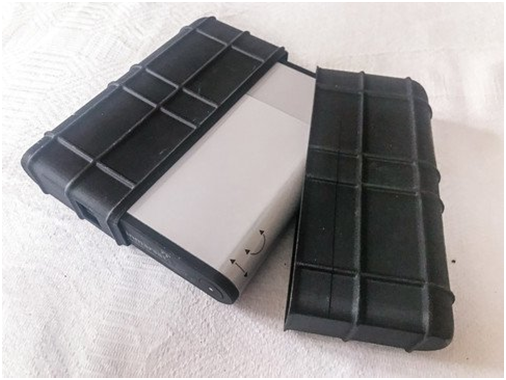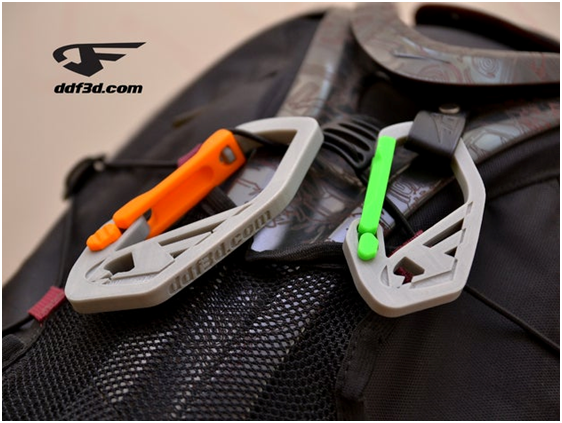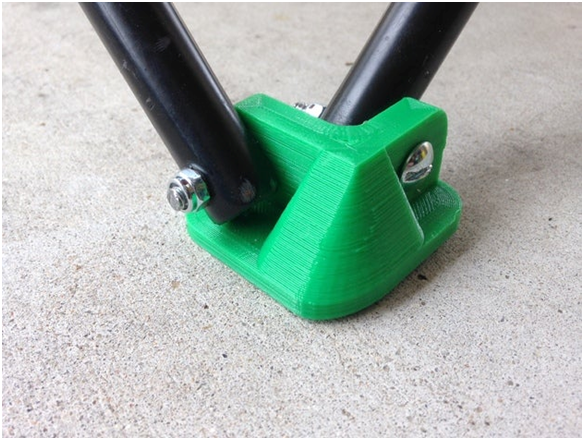
Charles R. Goulding and Peter Favata take a hike — with help from 3D printing.
Millions of people enjoy hiking in the United States every year. The U.S. has 1,244 national recreation trails across the country, and the federal government has just funded $9.5 billion for national park sites, of which there are 421. Due to the necessary restrictive measures in place to reduce the transmission of COVID-19, more and more people have taken an interest in hiking. It’s an activity that allows people to get out of the house, exercise, and experience the serenity that comes with nature, all while remaining socially distant.
Whether you’re a new hiker exploring local trails or an experienced ultralight backpacker, being prepared with the right gear is paramount to a good trek. As with any new hobby, getting started can be an investment.
3D printing can be a valuable tool for hikers, as it can be used to produce custom hiking gear that is both lightweight and low-cost. It can also be utilized to fix or replace gear that has been (almost inevitably) damaged or broken, without having to discard gear that may otherwise be usable and reinvest. Already, 3D printing is being utilized by hobbyists and companies alike and the hiking industry is no exception.
Customization for the Perfect Pack
When it comes to hiking, the gear you equip can make or break the day for you. Furthermore, a faulty piece of equipment can force you to end your day early, or in the case of an intense multi-day hike, can become dangerous. That being said, planning what to bring and preparing for the worst-case scenario is the most important step. More experienced hikers have their pack down to a science, with weight being the biggest underlying factor.
With 3D printing, you can customize anything – or everything – to fit your needs, while also cutting back on the weight you have to carry.
In 2018 Björn Lindwall climbed Mount Everest using 3D printed gear. Lindwall custom printed things he needed and made improvements to other parts in order to create the perfect gear. To test the new gear Lindwall climbed the tallest peak in South America to make sure it could stand up to the harsh environments. Lindwall thanked this gear as a reason he was able to accomplish the climb, however, he warned others not to copy his designs as what worked for him may not for others. When designing 3D printed gear make sure to take into account your own body specifications.

Print and Pack Essentials
Many hiking accessories can be printed for the novice hiker as well.
Of these is a small staple among hikers – carabiners. Carabiners are used to secure accessories or items such as water bottles and flashlights to the outside of your backpack where it can be most easily accessed. 3D printing carabiners, clips and other attachments can provide the strength needed to reliably secure these accessories without adding significant weight.

Replacements for Doohickeys
3D printing is also very useful for making replacement parts.
When it comes to hiking gear, this can be particularly handy because of the vast array of unique components that are subjected to wear and tear. In many cases, the malfunctioning of just one small component malfunctions can render the entire piece of equipment useless. In those cases, the useful life of hiking gear can be extended considerably using 3D printing.

Manufactures and technical designers utilizing 3D printing in the hiking gear industry may be eligible for R&D Tax Credits.
The Research & Development Tax Credit
Whether it’s used for creating and testing prototypes or for final production, 3D printing is a great indicator that R&D credit-eligible activities are taking place. Companies implementing this technology at any point should consider taking advantage of R&D Tax Credits.
Enacted in 1981, the now permanent Federal Research and Development (R&D) Tax Credit allows a credit that typically ranges from 4%-7% of eligible spending for new and improved products and processes. Qualified research must meet the following four criteria:
- Must be technological in nature
- Must be a component of the taxpayer’s business
- Must represent R&D in the experimental sense and generally includes all such costs related to the development or improvement of a product or process
- Must eliminate uncertainty through a process of experimentation that considers one or more alternatives
Eligible costs include US employee wages, cost of supplies consumed in the R&D process, cost of pre-production testing, US contract research expenses, and certain costs associated with developing a patent.
On December 18, 2015, President Obama signed the PATH Act, making the R&D Tax Credit permanent. Since 2016, the R&D credit can be used to offset Alternative Minimum Tax (AMT) or companies with revenue below $50MM and, startup businesses can obtain up to $250,000 per year in cash rebates that can be applied directly to payroll taxes.
Conclusion
Hiking is a great way to get exercise while enjoying the beauty of nature. During the COVID-19 pandemic, nature trails have proved to be an invaluable outlet for people going stir-crazy. That being said, the hiking equipment industry benefitted from this increased interest and can benefit even more from 3D printing. For manufacturers, integrating 3D printing can be used to develop and test prototypes, produce final products or replacement parts. It can significantly improve the development of new hiking equipment and production processes, which is the most basic criterion for the R&D Tax Credit.
